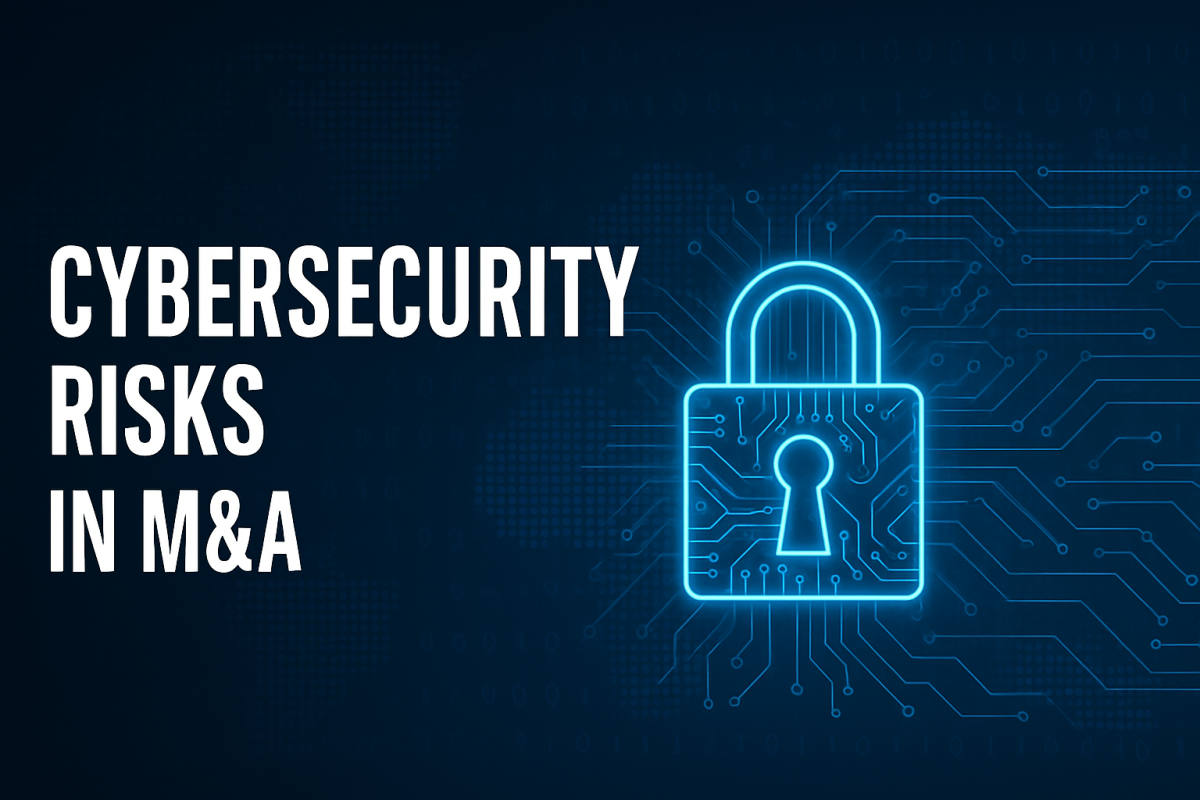Mergers and acquisitions (M&A) are high-stakes processes that can reshape entire organisations. As deal value reached $3.45 trillion globally in 2024, it’s clear that M&A activity is on the rise, driven by factors like stabilising interest rates and an ever-evolving business landscape. However, alongside the financial and operational opportunities that come with M&A, significant cybersecurity risks in M&A can emerge. The integration of systems, processes, and teams can introduce vulnerabilities that may be overlooked in the rush to complete the deal. Understanding the primary risks during an M&A process is crucial for safeguarding both organisations.
“When it comes to M&A, many companies focus on the business side and closing the transaction but may not ensure that the cyber security risks involved in acquiring an organisation are assessed. Merging systems teams and processes can create new vulnerabilities, and if those aren’t identified and addressed early, they can lead to bigger problems down the road. My advice? Don’t wait for something to go wrong. Get ahead of it with proactive security assessments such as a formal due diligence, and external assurance, like pen-testing, to make sure you are aware of the risks. Barry Rooney, CTO at CommSec

Insider Threats and Employee Risks
One of the more insidious cybersecurity risks in M&A is the potential for insider threats. Employees from both organisations may feel anxious or disengaged during the transition, and this can lead to data leaks or even deliberate sabotage. Disgruntled employees, especially those whose roles may be uncertain post-acquisition, may use their access to sensitive information to cause harm. This is often compounded by a loss of motivation, of increased project workloads due to the aquisition, which may impact security processes and controls. Furthermore, employees from the acquired company may be sceptical of the acquiring company, increasing the likelihood of data being mishandled or stolen.
Resourcing Challenges and IT Overload
Another significant cybersecurity risk in M&A activities is the strain it places on IT teams. Smaller teams, in particular, can struggle to maintain their regular cybersecurity operations while managing the increased workload of integration tasks. As both organisations work to merge their IT systems and infrastructure, cybersecurity tasks may take a back seat. The pressure to meet business deadlines, such as achieving seamless data flow between merged systems, can lead to shortcuts in security processes. This disruption to normal operations makes both companies more vulnerable to cyber threats, as routine infosec tasks like patching, monitoring, and threat detection may be delayed or neglected.
Policy Gaps and Compliance Concerns
When two companies merge, they often bring with them different cybersecurity policies, creating ambiguity and potential gaps in alignment. The lack of a clear, unified policy can leave both organisations exposed to risks they are not fully prepared to address. For instance, one company might have a robust security framework, while the other may have inadequate policies in place. This disparity can lead to inconsistent protections across the merged organisation, creating weak points that cybercriminals can exploit. Without clear guidelines and a unified approach, aligning the two security environments becomes a daunting challenge.
Third-Party and Network Security Risks
M&A activities can also create vulnerabilities in third-party relationships and network security. As companies merge, they often rely on third-party suppliers and vendors for IT infrastructure or services, but these relationships may not be assessed thoroughly during the M&A process. Expiring contracts for domains, certificates, and other critical services can go unnoticed, creating potential entry points for attackers. Additionally, integrating physical networks from different organisations, each with distinct security controls, can lead to risks if security measures are bypassed or ignored to meet integration deadlines. This kind of Intense integration, while necessary to meet business goals, can unintentionally remove important security measures and compromise the overall security posture of the organisation.
Malicious Targeting and Social Engineering Threats
M&A processes are also a prime opportunity for malicious actors to target the organisation. Cybercriminals are quick to identify that M&A activity often distracts IT and security teams, making organisations more susceptible to targeted attacks. These attackers may try to exploit the confusion and lack of focus by launching sophisticated phishing or social engineering campaigns. For example, they may impersonate personnel from the acquiring company to gain access to the acquired company’s IT systems and use threats to coerce IT teams to give access. This can be especially damaging if key IT staff or suppliers are duped into granting access, allowing cybercriminals to infiltrate networks undetected.
Key Problems and How to Address Them
Problems to Watch Out For:
- Disgruntled employees leaking or mishandling data.
- Loss of key IT staff with cyber security responsibility and knowledge during the transition.
- Increased workload on IT teams, affecting daily infosec operations.
- Expiring contracts and security certificates leaving gaps in service or vulnerabilities.
- Diverging security policies leading to inconsistent protections.
- Ambiguity in roles and responsibilities leading to lack of accountability.
- Targeting of IT systems by cybercriminals, capitalising on the distraction of M&A.
- Social engineering attacks targeting IT teams and suppliers.
- Risky integration of physical networks without proper security controls.
- Undisclosed breaches or technical debt that complicates post-acquisition security.
How to Mitigate These Risks:
- Ensure comprehensive cybersecurity due diligence is conducted before the deal is closed.
- Formulate a Cyber security steering board with participation from all entities, encouraging openness and transparency.
- Develop a clear plan for integrating the security environments of both organisations, addressing gaps based on a risk approach.
- Allocate additional resources, such as temporary staff or external support, to handle the extra workload of integration projects without sacrificing daily infosec operations.
- Identify key cybersecurity personnel in the acquired company and offer retention packages to keep them on board post-acquisition.
- Proactively address any security gaps in the acquired company, factoring them into the acquisition budget.
- Include information security as part of the due diligence process, particularly focusing on policies, responsibilities, and historical breaches.
- Align security policies for both companies well in advance, ensuring a unified approach from Day 1.
- Provide early training to the acquired company’s employees, including phishing simulations to increase awareness of potential social engineering tactics.
- Implement a unified security solution, such as a single Security Operations Centre (SOC), to maintain visibility and governance over all assets.
- Avoid direct network connectivity between companies; instead, use controlled data transfer mechanisms to ensure security during integration.
By recognising these cybersecurity risks in M&A and proactively addressing them, organisations can better protect themselves during the M&A process and ensure that their cybersecurity posture remains strong throughout the transition.
How CommSec Can Help Mitigate Cybersecurity Risks in M&A
Mergers and acquisitions are complex, and ensuring your cybersecurity posture is robust throughout the process is critical. At CommSec, we specialise in providing comprehensive cybersecurity solutions that protect organisations during high-stakes transitions like M&A. Our expert team can help with everything from cybersecurity due diligence and risk assessments to integrating security environments seamlessly across both organisations.
As part of our service, we offer penetration testing to give your IT security operations a thorough health check. This proactive measure identifies vulnerabilities before they can be exploited, ensuring your systems are secure and ready for integration. With our in-depth testing and managed SOC services, you can be confident that your organisation is fully protected during the M&A process.
If you’re looking to safeguard your business from the cybersecurity risks in M&A, contact CommSec today. Our managed SOC services, proactive MDR solutions, will ensure your systems are protected, and your teams are prepared for the challenges ahead. Contact us now to discuss how we can support your M&A journey and safeguard your business.

